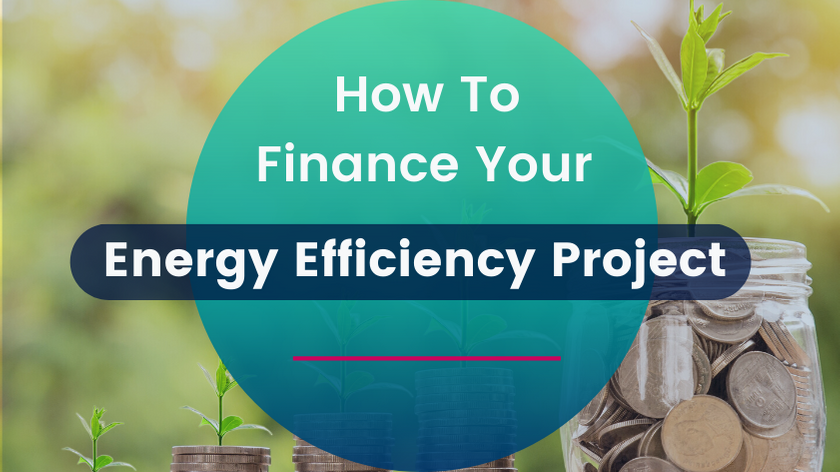Strategic energy efficiency investments are the key to avoiding higher utility bills. We look at the available options to finance an energy efficiency project.
For a small energy efficiency project requiring little investment, you may want to use your own funds to pay for it, so that your payback period remains low and your return-on-investment remains high. Yet, if we are talking about large, expensive projects, financing is the best way to do it. But don’t get too worried if we are considering a big amount of money. In energy efficiency, even a longer return-on-investment leads to reliable equipment that will pay for itself with energy savings.
What’s the process for carrying out an Energy Efficiency Project?
First, you need to identify an energy efficiency measure to be improved. That is to say, be aware of the available technologies, assess your facilities and find what it is that is not working efficiently. You may have issues with your building’s lighting, using non clean technology, a simple machine spending too much power on the manufacturing process, or even the big amount of carbon emissions your production entails.
Second, you may estimate your energy savings with that new measure. How? Calculate the energy use, before and after implementing the improvement. A benchmarking tool can help you to do this.
Then, an economic evaluation of costs and benefits is essential: things like the cost of capital, the discount rate and the analysis of the project cash flows.
The fourth step involves identifying the funding source. Here is where we help with several solutions. Consider either using the capital budget or the operations & maintenance funds. Where can I get financing from? Who will help me finance an energy efficiency project? What are the alternatives? etc.
Finally, you will be ready to develop the project and install the measures.
What options do you have whenever you want to undertake an Energy Efficiency Project but you have limited budget?
1. ESCO financing (by the European Commission) refers to financing with internal funds of the ESCO and may involve own capital or equipment lease.
2. Energy-user financing involves financing with his own internal funds supported by an energy savings guarantee provided by the ESCO. For instance, let’s say a university wants to finance a new energy project for its campus. The center will use its endowment fund to do so, where an ESCO will guarantee energy savings.
3. Third-party financing refers to debt financing. Two different arrangements can be carried out in the European Union: either ESCO borrows the financial resources needed to implement the project, or the energy user itself takes a loan from a finance institution. The ESCO will endorse this institution with a guarantee agreement. The whole point of this guarantee is to prove to the bank that the project from which the customer borrows money will generate a positive cash flow.
- Bank Financing is the main method for third-party financing. Grants and loans entail simpler and cheaper transactions. Loans are provided by the bank institution to the other party at an interest rate. Grants are non-repayable funds or products disbursed by the institution to the business or individual. What are the cons? The project will be treated as any other capital investment. Banks will not be familiar with energy efficiency projects and their characteristics.
- Energy Savings Performance Contracting is a new alternative financing mechanism in the United States. They are distinguished by having long paybacks and reducing project risk. Still, the contract entails high transaction costs and they are focused on big projects rather than small ones.
- Private Finance for Energy Efficiency (PF4EE) is a joint agreement between the European Investment Bank and the European Commission. It aims to increase private financing for investments in energy efficiency-enhancing projects. This European instrument helps intermediary banks in EU Member States to develop and offer loan programmes for energy efficiency projects.
Now you know some options to finance an energy efficiency project, you have no excuse not to put into action. If you want to, you can!



